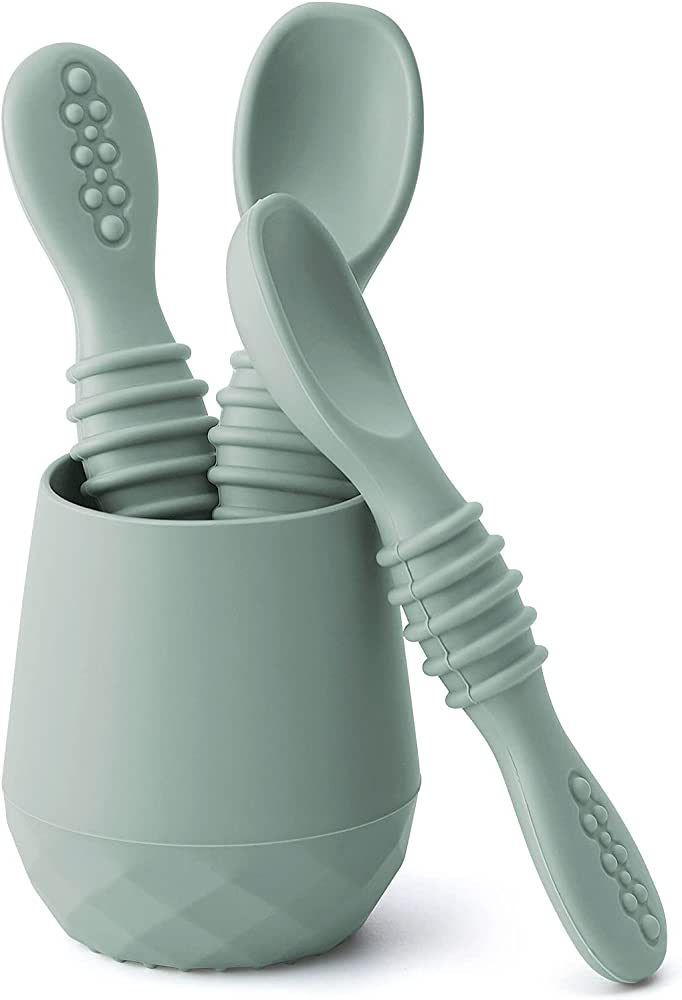views
Caring for a baby involves a lot of learning especially when it comes to keeping your little one comfortable and healthy. Two common concerns for new parents are diaper rash and transitioning to feeding cups. In this guide we’ll explore the best ointments to treat and prevent diaper rash and the most effective feeding cups that support your child’s growth and independence Best Ointments for Diaper Rash
What is Diaper Rash?
Diaper rash is a form of skin inflammation caused by prolonged exposure to wet or dirty diapers friction or a sensitivity to products like wipes or detergents. It appears as red irritated patches on the baby’s bottom and can range from mild to severe.
What to Look for in a Diaper Rash Ointment:
- Zinc oxide: Forms a protective barrier on the skin.
- Petroleum jelly: Locks in moisture and protects against irritation.
- Natural ingredients: Aloe vera calendula and beeswax are gentle on sensitive skin.
- Fragrance-free: Avoid unnecessary chemicals or perfumes that may worsen irritation.
Top 5 Diaper Rash Ointments:
1. Desitin Maximum Strength Original Paste
- Key Ingredient: 40% Zinc Oxide
- Why it’s Great: This thick rich formula creates a powerful barrier making it ideal for treating moderate to severe diaper rash. Works quickly—often showing results overnight.
- Pros: Long-lasting protection fast-acting
- Cons: Thick texture can be harder to wipe off
2. Boudreaux’s Butt Paste (Maximum Strength)
- Key Ingredient: 40% Zinc Oxide
- Why it’s Great: Pediatrician-recommended and free from harsh chemicals like parabens preservatives and dyes. It provides both healing and preventive benefits.
- Pros: No strong odor very effective
- Cons: Can stain clothes if used in excess
3. Aquaphor Baby Healing Ointment
- Key Ingredient: Petrolatum (41%)
- Why it’s Great: A multipurpose product not only for diaper rash but also for chapped cheeks cuts and dry skin. It’s gentle enough for newborns.
- Pros: Versatile excellent moisturizer
- Cons: Doesn’t have zinc oxide so may not be as protective for severe rashes
4. Triple Paste Medicated Ointment
- Key Ingredient: Zinc Oxide (12.8%)
- Why it’s Great: Dermatologist-tested and highly recommended for persistent rashes. Its fragrance-free hypoallergenic formula is safe for daily use.
- Pros: Ideal for sensitive skin thick consistency
- Cons: Pricier than other options
5. Weleda Diaper Care Cream
- Key Ingredients: Zinc Oxide Calendula
- Why it’s Great: A plant-based alternative that soothes while protecting this cream is especially popular among parents seeking organic and natural solutions.
- Pros: Gentle certified natural
- Cons: Mild scent may not be for everyone
Tips for Using Diaper Rash Creams:
- Apply a generous layer to clean dry skin during every diaper change.
- Use more frequently during teething or antibiotic use which can trigger rashes.
- Let the area air out, when possible, for faster healing.
Best Feeding Cups for babies As babies grow transitioning from bottles to cups helps promote oral development reduces the risk of tooth decay and encourages self-feeding. Pediatricians often recommend starting this transition around 6 to 9 months.
Types of Feeding Cups:
- Sippy Cups: Typically have a spill-proof spout; good as an early introduction.
- Straw Cups: Great for oral development and less risk of tooth issues.
- Open Cups: Teaches coordination but can be messy—best under supervision.
- 360-Degree Rim Cups: Spill-proof but allow drinking from any part of the rim.
Top 5 Feeding Cups for Babies:
1. Munchkin Miracle 360 Trainer Cup
- Why it’s Great: This cup has a 360-degree drinking edge which helps teach toddlers to drink from a regular cup without the mess.
- Age Range: 6+ months
- Pros: Dentist-recommended easy to clean
- Cons: May take time for baby to learn
2. Nubby No-Spill Super Spout Grip N' Sip
- Why it’s Great: A soft silicone spout that’s gentle on gums and an easy-grip design make this a parent favorite.
- Age Range: 4+ months
- Pros: Affordable handles for easy holding
- Cons: Silicone spout can wear with frequent use
3. Dr. Brown’s Soft Spout Transition Cup
- Why it’s Great: Designed to mimic bottle nipples while introducing spout drinking easing the transition.
- Age Range: 6+ months
- Pros: Easy transition from bottles BPA-free
- Cons: Not spill-proof if dropped
4. OXO Tot Transitions Straw Cup
- Why it’s Great: Durable with a leak-proof straw design making it a smart choice for car rides and travel.
- Age Range: 6+ months
- Pros: Removable handles no-spill straw
- Cons: Slightly harder to clean
5. Philips Avent My Natural Trainer Cup
- Why it’s Great: A hybrid between bottle and cup with a soft spout and removable handles—ideal for early learners.
- Age Range: 4+ months
- Pros: Interchangeable with other Avent products spill-proof
- Cons: Spout can collapse if bitten too hard
Tips for Introducing a Cup:
- Start slowly by offering small amounts of water or breastmilk/formula in the cup.
- Demonstrate how to use the cup to your baby.
- Use positive reinforcement and allow time to adjust.




Comments
0 comment